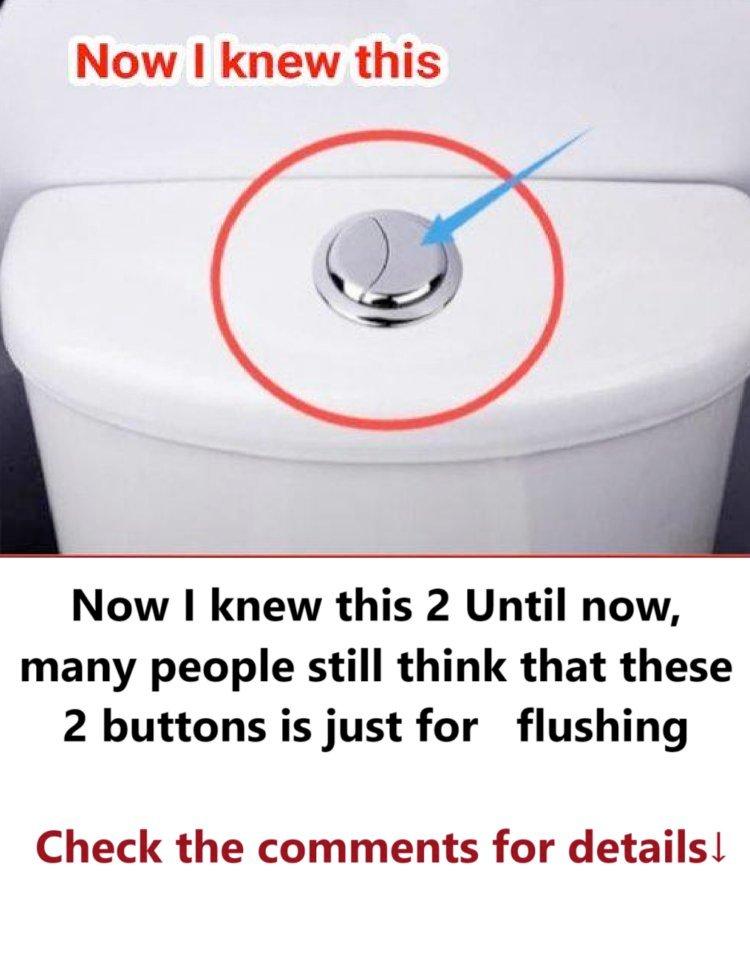ADVERTISEMENT
Many People Still Think That These 2 Buttons Are Just for Flushing: Understanding the Dual-Flush Toilet
When you walk into most modern bathrooms, you’ll notice a sleek, streamlined toilet with two buttons on the top of the tank. At first glance, many people might assume these buttons are simply for flushing — after all, that’s the main purpose of any toilet, right? However, there’s more to these buttons than meets the eye. These dual-flush toilets are designed to be more environmentally friendly and efficient, allowing you to control the amount of water used for flushing.
In this article, we’ll explore the two buttons and their important roles in water conservation, how dual-flush toilets work, and why more people should understand their function.
What Is a Dual-Flush Toilet?
A dual-flush toilet is a type of toilet that offers two different flush options: one for liquid waste and one for solid waste. Typically, the toilet will have two buttons or levers:
- The Smaller Button: This button is for liquid waste, often referred to as a “half flush.” It uses less water to flush the toilet and is perfect for urine.
- The Larger Button: This button is for solid waste, referred to as a “full flush.” It uses more water to ensure a thorough cleaning of the bowl after solid waste.
While these two buttons might seem like a simple way to choose the strength of your flush, they play an essential role in water conservation and eco-friendliness, which is crucial as we face growing concerns over water shortages in many parts of the world.
The Environmental Benefits of Dual-Flush Toilets
In many places, water is a precious resource, and reducing the amount of water used in everyday activities can have a significant impact. According to research, toilets are one of the largest consumers of water in the average household, accounting for about 30% of residential water use.
A dual-flush toilet helps reduce this consumption by offering a choice of flush volumes. Here’s why they are beneficial:
- Water Conservation: The smaller button typically uses only 1.1 to 1.3 gallons of water per flush for liquid waste, compared to the 1.6 gallons used by a traditional toilet. By choosing the smaller flush when possible, you’re saving a significant amount of water over time.
- Less Water Wasted: In a traditional toilet, a full flush is used every time, regardless of whether the waste is liquid or solid. The dual-flush system allows for targeted water usage, only using more water when it’s truly needed (i.e., for solid waste).
- Cost Savings: Using less water means lower water bills. Over time, switching to a dual-flush toilet can result in savings for homeowners.
- Environmental Impact: Every gallon of water saved is a step toward reducing your environmental footprint. By using less water in the bathroom, you contribute to efforts to conserve our planet’s most vital resource.
- For Complete Cooking STEPS Please Head On Over To Next Page Or Open button (>) and don’t forget to SHARE with your Facebook friends
